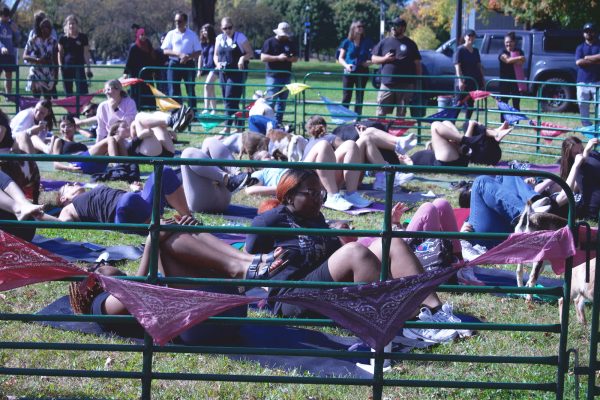Oakland sends second capital outlay request for Varner expansion
New state of the art buildings are opening each year across campus. As enrollment increases, so must the spaces to teach students.
A significant number of faculty, graduate assistants, student and others involved with the College of Arts and Sciences do not have offices or the necessary space to do their work.
A capital outlay request was submitted last year to Lansing and was denied. Now, a second capital outlay request has been sent to the Michigan legislature for an expansion of Varner Hall.
“This would mean that they would provide some funding or a percentage of funding for building academic spaces,” said Senior Vice President for Academic Affairs and Provost, Dr. James Lentini.
The $100 million-plus expansion of Varner has been on Oakland’s to-do list for a while now, according to Lentini.
Lentini said part of this could be attributed to Governor Rick Snyder.
“Since he has been governor, he has not provided funding for capital outlay,” Lentini said.
Submission of outlay material was different this year according to Lentini. The proposal was resubmitted to the state and Dr. Lentini and President George Hynd presented the proposal to a senate sub-committee.
“We hope that legislators will understand the need, we are a growing institution,” Lentini said.
Lentini explained that even though the whole project will not be funded, every dollar counts.
“If they come up with even a third or a quarter of it, it gets us at least going,” he said.
Lentini is aware that there are faculty without spaces and “inadequate numbers of seats in rooms.”
Varner houses many of the programs within the College of Arts and Sciences, the only college found on the university and provides the highest number of credits according to Lentini.
“No matter what major you’re in, you’re taking courses in the arts and sciences,” Lentini said.
Aside from lack of office and other teaching spaces, there is a significant absence in performing spaces for those in the music, theatre and dance programs.
“We do not have enough space to run our programs,” said Jackie Wiggins, Chair of the Department of Music, Theatre and Dance and Professor of Music Education.
The 1971 building was not built acoustically for the arts, Wiggins said. With the overall structure and interconnected ventilation system, music can be heard throughout classrooms and can be a disturbance.
Wiggins said she was told a wing would be built to house music, theatre and dance and that the original hall would be renovated to house other programs such as the social sciences and arts.
“If we had a choice, our first priority would be a concert hall and proscenium theatre,” Wiggins said.
She said that those pursuing professional acting must know how to perform in a proscenium theatre just like singers and those who play instruments must learn to fill a large concert hall.
Concert halls and theatres cannot be funded by state money, according to Wiggins. These additions will needed to be funded by donations and funds raised, but Wiggins is still eager for a renovation of Varner Hall that has been in the works for more than 20 years.
“It’s something that we all hold our breath for,” Wiggins said.







